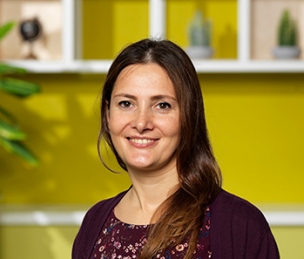Displaying 1 - 7 of 7
-
Szilagyi, I. A., Vino, A., De boer, J., Eising, E., Hintz, F., Meyer, A. S., & Fisher, S. E. (2024). Polygenic profile of individual differences in language skills in a Dutch cohort. Poster presented at the Highlights in the Language Sciences Conference 2024, Nijmegen, The Netherlands.
-
Eising, E., Carrion Castillo, A., Vino, A., Shriberg, L. D., & Fisher, S. E. (2017). Childhood apraxia of speech is caused by genes that control gene expression during fetal brain development. Poster presented at the 11th Genomics of Rare Disease conference, Hinxton, UK.
-
Kucera, K. S., Graham, S. A., Vino, A., Asher, J. E., & Baron-Cohen, S. (2015). Exome sequencing in multiplex synaesthesia families identifies rare coding variants in genes within candidate linkage regions. Poster presented at the American Society for Human Genetics Annual Meeting, Baltimore, US.
Abstract
Synaesthesia is a rare neurodevelopmental non-disease condition estimated to affect <2% of the human population. People with synaesthesia experience cross-modal perceptions, such as visual images triggered by sounds, words that elicit tastes, or involuntary and stable associations of letters and/or numbers with colours. It has been hypothesized that synaesthesia is a consequence of relative hyperconnectivity in the brain. The well-documented familial clustering of synaesthesia suggests that genes play a significant role. However, results of previous linkage studies indicate that synaesthesia is likely to be genetically heterogeneous; thus, a similar phenotype may result from different combinations of contributing genes and their alleles in different cases. In the current study, we used next-generation sequencing to investigate families in which multiple relatives have synaesthesia. We sequenced exomes of people with and without synaesthesia in three such families (13 synaesthetes and 4 non-synaesthetes in total), to detect rare genetic variants that segregate with the trait. We thereby identified 77 rare (MAF<0.05) nonsynonymous protein-coding variants that segregate with the phenotype in those families. Of the 77 variants, 10 were located within previously reported suggestive linkage regions on chromosomes 2q13 and 4q28.3. Future investigations will use data from gene expression and protein function in cells and tissues to determine which of these candidate variants are most likely to have roles in aetiology. Furthermore, common variation in the same candidate genes can be tested for association in independent case-control datasets, to complement the family-based studies described here. Identification of genes implicated in synaesthesia will not only shed light on how this intriguing trait arises, but also promises novel insight into the molecular bases of neural connectivity in the human developing brain. -
Sollis, E., Vino, A., Gilissen, C., Froehlich, H., Graham, S. A., Pfundt, R., D., Brunner, H. G., Rappold, G. A., Fisher, S. E., & Derizioti, P. (2015). Functional characterization of coding FOXP1 variants found in individuals with intellectual disability, autism and language impairment. Poster presented at the 45th Annual meeting of the Society of Neuroscience, Chicago, IL.
-
Sollis, E., Vino, A., Gilissen, C., Frohlich, H., Graham, S. A., Pfundt, R., Dimitropoulou, D., Brunner, H., Rappold, G., Fisher, S. E., & Derizioti, P. (2015). Identification and functional characterization of de novo FOXP1 variants in cases of autism, intellectual disability and language impairment. Poster presented at American Society for Human Genetics Annual Meeting, Baltimore, US.
Abstract
Heterozygous variants disrupting the FOXP1 transcription factor (forkhead box protein P1; OMIM 605515) have been implicated in an emerging syndrome of global developmental delay, intellectual disability and autistic features (OMIM 613670). All etiological FOXP1 variants reported to date have been de novo, and include whole gene deletions, translocations, nonsense variants, missense variants and frameshift variants. Speech and language impairments, which range from moderate to severe and affect expressive language to a higher degree than receptive language, are also consistently reported in individuals carrying FOXP1 variants. The presence of speech and language deficits in this FOXP1-deficiency syndrome is of particular interest, because FOXP1 is the closest paralogous gene to FOXP2 (OMIM 605317), which is disrupted in a rare form of speech and language disorder (OMIM 602081). In this study, we report three novel heterozygous de novo FOXP1 variants identified through clinical whole-exome sequencing in individuals diagnosed with intellectual disability and/or autism spectrum disorders. We performed detailed functional characterization of the three novel variants found here alongside three previously detected de novo etiological variants. Our assays examined the effects of the six de novo FOXP1 variants on several aspects of protein function, including subcellular localization and transcriptional repression capability. In addition, because FOXP1 and FOXP2 are both expressed in the striatum where they may interact with the potential to co-regulate downstream targets, we investigated the effects of the six de novo FOXP1 variants on FOXP1-FOXP2 interactions. Our findings provide further insight into the pathogenic mechanisms of FOXP1-deficiency syndrome, and highlight the value of combining clinical exome sequencing with functional analyses in understanding the molecular basis of neurodevelopmental disorders. -
Sollis, E., Vino, A., Gilissen, C., Froehlich, H., Graham, S. A., Pfundt, R., Dimitropoulou, D., Brunner, H. G., Rappold, G. A., Fisher, S. E., & Derizioti, P. (2015). Understanding the contribution of FOXP genes in language-related disorders. Poster presented at the 45th Annual meeting of the Society of Neuroscience, Chicago, IL.
-
Udden, J., Hulten, A., Kucera, K. S., Vino, A., Fisher, S. E., & Hagoort, P. (2015). No association of genetic variants of FOXP2 and BOLD response during sentence processing. Poster presented at the 7th Annual Society for the Neurobiology of Language Conference (SNL 2015), Chigaco, USA.

Share this page